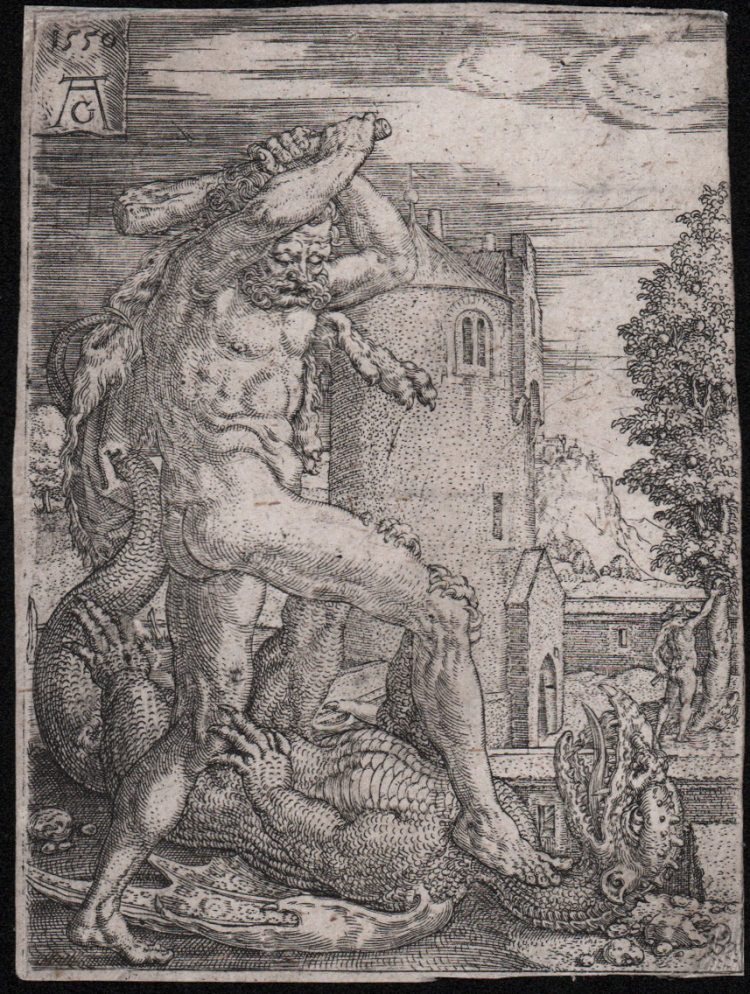



| Reference: | S42519 |
| Author | Heinrich ALDEGREVER |
| Year: | 1550 |
| Measures: | 70 x 92 mm |


| Reference: | S42519 |
| Author | Heinrich ALDEGREVER |
| Year: | 1550 |
| Measures: | 70 x 92 mm |
Engraving, dated and signed with artist’monogram at top left: 1550 / AG.
A good impression, printed on contemporary laid paper, irregularly trimmed close to platemark, missing the Latin inscription at the bottom.
From the series The Labors of Hercules, consisting of 13 plates, each one dated and monogrammed, bearing at the bottom, under the image, two verses in Latin.
Bibliografia
Bartsch, VIII, pp. 391, 86; TIB, XVI.178.73; New Hollstein, 91.86.
Heinrich ALDEGREVER (Paderborn, 1502; Soest, Westfalia, 1555–61)
|
German engraver, painter and designer. He was the most important graphic artist in Westphalia in the 16th century. His reputation rests largely on his ornamental designs, which make up about one third of his c. 300 engravings. They were principally intended as models for metalworkers but were also adapted by other craftsmen for such decorative arts as enamel, intarsia and book illustration. Aldegrever followed Dürer and the Nuremberg LITTLE MASTERS, deriving models for his paintings and subject prints as well as a full repertory of Renaissance ornamental motifs: fig and acanthus foliage, vases and cornucopia, combined with putti and satyrs, tritons, mermaids and dolphins, sphinxes, masks and medallions. From the beginning of his career Aldegrever was aware of the artistic trends of the time: the Dürer influence was strongest at its outset yielding somewhat in work of the 1530s to Mannerist tendencies under Netherlandish influence, though never waning entirely.
|
Heinrich ALDEGREVER (Paderborn, 1502; Soest, Westfalia, 1555–61)
|
German engraver, painter and designer. He was the most important graphic artist in Westphalia in the 16th century. His reputation rests largely on his ornamental designs, which make up about one third of his c. 300 engravings. They were principally intended as models for metalworkers but were also adapted by other craftsmen for such decorative arts as enamel, intarsia and book illustration. Aldegrever followed Dürer and the Nuremberg LITTLE MASTERS, deriving models for his paintings and subject prints as well as a full repertory of Renaissance ornamental motifs: fig and acanthus foliage, vases and cornucopia, combined with putti and satyrs, tritons, mermaids and dolphins, sphinxes, masks and medallions. From the beginning of his career Aldegrever was aware of the artistic trends of the time: the Dürer influence was strongest at its outset yielding somewhat in work of the 1530s to Mannerist tendencies under Netherlandish influence, though never waning entirely.
|